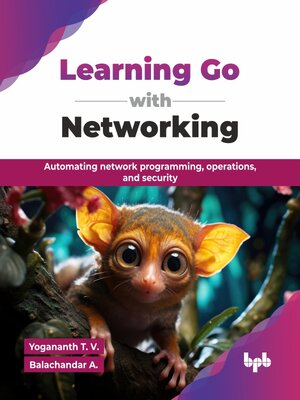Learning Go with Networking
ebook ∣ Automating Network Programming, Operations, and Security
By Yogananth T. V.

Sign up to save your library
With an OverDrive account, you can save your favorite libraries for at-a-glance information about availability. Find out more about OverDrive accounts.
Find this title in Libby, the library reading app by OverDrive.



Search for a digital library with this title
Title found at these libraries:
| Library Name | Distance |
|---|---|
| Loading... |
Golang has emerged as a powerful language for networking, known for its efficiency and concurrency, making it ideal for building resilient and scalable network applications. This book is designed to equip networking professionals with the Golang skills needed to navigate this dynamic landscape, providing a practical guide from fundamental concepts to advanced network programming.This book systematically guides you through Golang's core features, including concurrency, generics, and error handling, before diving into essential networking principles like IP, TCP, and UDP. You will learn to develop applications, design synchronous and asynchronous APIs (with a focus on Ponzu and Keycloak), and effectively handle data using formats like JSON and XML, along with stream processing with AMQP, Kafka, and MQTT. The book explores Golang network packages for protocols such as ARP, FTP, DNS, and raw sockets. It also emphasizes performance optimization, covering I/O, caching, and database techniques, and automation strategies, including device, network, and cloud deployment, along with Cisco DevNet. Security is thoroughly addressed, covering authentication, cryptography (SSL/TLS, asymmetric/symmetric), certificate handling, and OWASP Top 10 vulnerabilities, and the book concludes with an exploration of network penetration testing techniques.By the end of this book, readers will gain a solid foundation in Golang and its application to networking, enabling them to build efficient, secure, and automated network solutions and understand the security landscape, from defensive best practices to offensive techniques.







